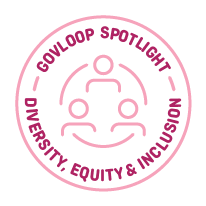Never before have government leaders had to engage across so many different generations at the same time. It’s a unique position, and not always an easy one.

Considering the generations that make up a jurisdiction’s constituency is important. As this previous GovLoop post discussed, understanding generational differences can actually improve government service in tangible ways. In addition, newly available relief funds can be used to increase equity in access to government services and inclusion in government processes for all community residents. This was recently explored in “Relief Funds and Equitable Service.”
Top Takeaways
Jason Dorsey, president and generations expert at The Center for Generational Kinetics (CGK), recently spoke at a public-sector industry event in which he challenged attendees – myself among them – to abandon their perceptions of boomers, Generation X, millennials, and Generation Z, and to apply an accurate generational context to their work for greater community outcomes. Dorsey has led more than 65 generational studies and writes extensively on the impact of Gen Z. The session’s takeaways for public sector leaders are both interesting and instructive.
As high-level context, for example, Dorsey noted the following:
- Generations are not boxes; they are powerful, predictive clues on where to start to connect with people of different ages.
- Parenting, technology and economics are the most important drivers of generational trends.
- Every one of us has a different natural relationship with technology that is driven by our age, which is invisible until we’re interacting with someone who has a different relationship with technology.
Generations matter not only in terms of understanding who is consuming government information and using government services, but also understanding the makeup of the current and future government workforce. The following insights can help government practitioners think differently about generations in order to apply a more accurate context to internal and external interactions.
- Gen Z is the fastest-growing generation in the workforce.
- For the first time ever, technology trends are starting with the youngest and rippling up to the oldest.
- Social justice is the No. 1 social cause for Gen Z.
- Gen Z was the most impacted in job loss or job reduction during the COVID-19 pandemic.
- The oldest millennials are now 40, and there are more millennial managers in the workforce than any other generation.
- The number one social cause for millennials is combating climate change,
- Millennials are not tech savvy, they are tech dependent; they don’t know how technology works, they just know they cannot live without it.
- Gen X is naturally skeptical, in a “trust but verify” way.
- Gen X is the most loyal generation and the bench of talent in the workforce, however, Gen X is deciding right now if they should finish out their careers where they are, or look for other opportunities.
- Baby boomers are the most influential generation in communities, by way of commission membership, elected positions, and wealth ownership.
Generations and Government
From supporting research regarding generations’ interaction with local government, in particular, Dorsey noted the following important statistics:
- 85% of Gen Z felt government can do a better job of engaging citizens.
- 61% of Gen Z trusts social media more than government, and 51% of Gen Z prefers to receive government information via social media.
- 34% of Gen Z reports receiving information from local government weekly, (as opposed to boomers, who only report receiving government information monthly), due to their higher use of real-time digital channels, creating opportunity for a uniquely informed constituency.
- The top barrier to engagement with government for Gen Z is a frustrating process.
- 40% of Gen Z indicate clear, easy-to-use technology is the number one way to improve interactions with local government.
- 76% of Gen Z responded that better technology would go a long way to improving local government.
5 Actions to Take Right Now
Understanding what generations are and what shapes them can give governments the “why” behind their normal tracking data, which is the “what.” It lends to understanding how all community members approach and think about government interactions, which can meaningfully impact choices around service delivery. “If we can add the ‘why’ to the ‘what,’” said Dorsey, “we can change the future.”
To that end, Dorsey offered these five actions governments can take right now to unlock the potential of every generation:
- Pay close attention to the trends that Gen Z is driving.
- Technology should be seamless at every government interaction; simplicity is key across generations.
- Understand that social media is not just media, but customer service.
- In communications and messaging, show the younger generations the outcome first.
- Create a generational snapshot of your community.
“Every single generation is important,” Dorsey emphasized. “The better we understand them, even our own, the better we can communicate, lead, and drive innovation and trust.”
Interested in becoming a Featured Contributor? Email topics you’re interested in covering for GovLoop to [email protected]. And to read more from our Spring 2021 Cohort, here is a full list of every Featured Contributor during this cohort.
Meredith Trimble is a former municipal official and Town Council Acting Chair, who focused on strategic planning, annual budgeting and bonded infrastructure projects. Her government experience also includes posts in both federal and state-level executive branch agencies: Associate Editor of the Federal Election Commission’s FEC Record; and Director of Education for the CT Office of State Ethics. In her current role as a Content Manager, Editorial with Tyler Technologies, Inc., she writes content to help empower those who serve the public. Her current focus is to help facilitate data-enabled organizations and create connections between governments and those they serve.
Photo by Dario Valenzuela on Unsplash






This is a very important topic, thank you for sharing!
Thank you!